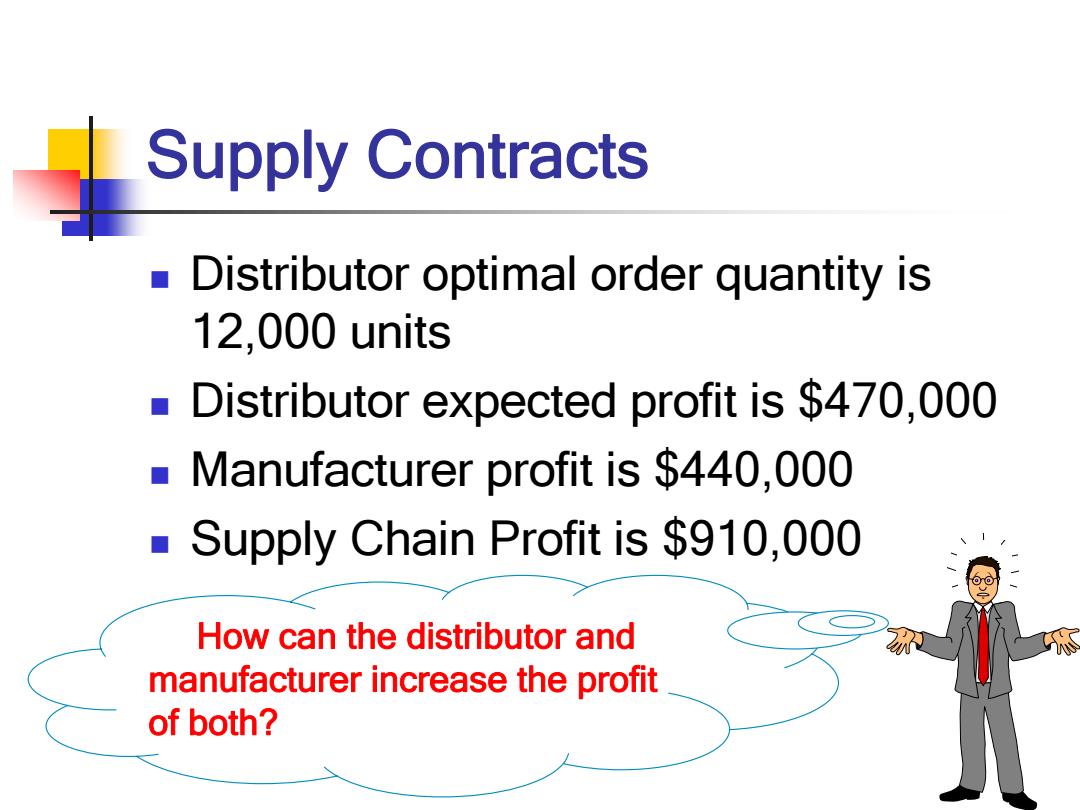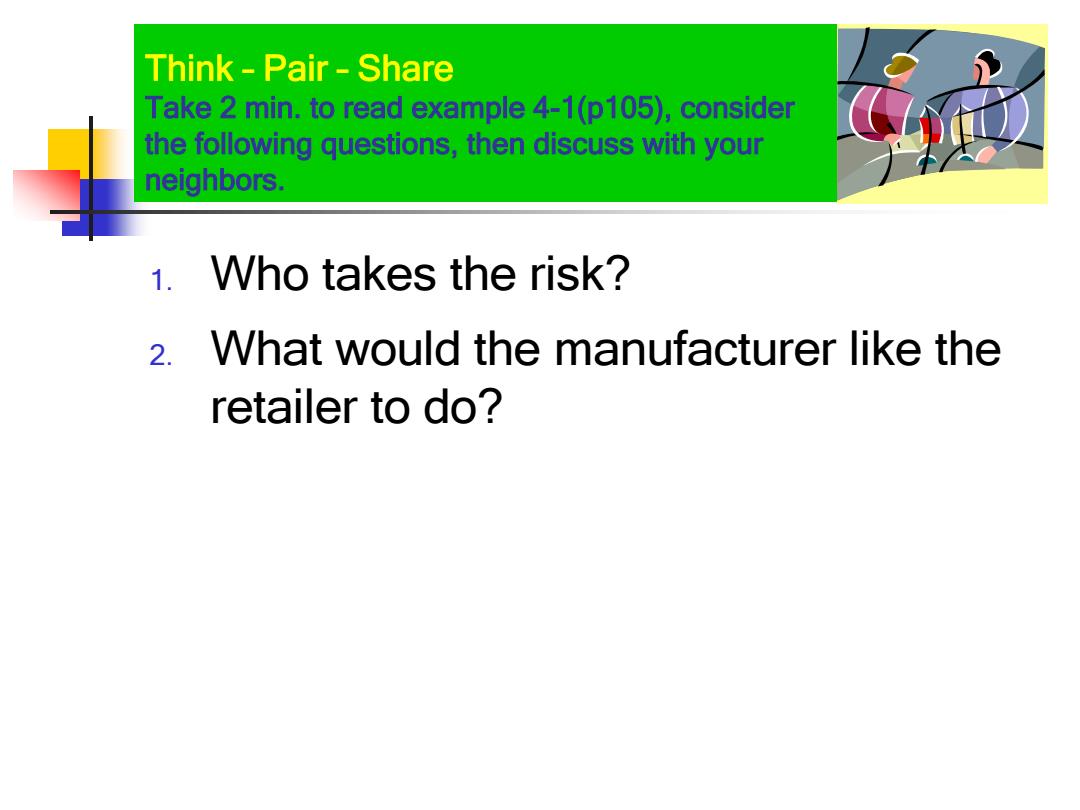
Supply Contracts Xiaohong Pang Automation Department Shanghai Jiaotong University
Supply Contracts Xiaohong Pang Automation Department Shanghai Jiaotong University

SnowTime Costs Production cost per unit(C):$80 o Selling price per unit(S):$125 o Salvage value per unit (V):$20 Fixed production cost(F):$100,000 Q is production quantity,D is demand Profit Revenue-Variable Cost-Fixed Cost Salvage
SnowTime : Costs Production cost per unit (C): $80 Selling price per unit (S): $125 Salvage value per unit (V): $20 Fixed production cost (F): $100,000 Q is production quantity, D is demand Profit = Revenue - Variable Cost - Fixed Cost + Salvage

Key Insights from this Model The optimal order quantity is not necessarily equal to average forecast demand. The optimal quantity depends on the relationship between marginal profit and marginal cost As order quantity increases,average profit first increases,and then decreases. As production quantity increases,risk increases.In other words,the probability of large gains and of large losses increases
Key Insights from this Model The optimal order quantity is not necessarily equal to average forecast demand. The optimal quantity depends on the relationship between marginal profit and marginal cost. As order quantity increases, average profit first increases, and then decreases. As production quantity increases, risk increases. In other words, the probability of large gains and of large losses increases

Supply Contracts Distributor optimal order quantity is 12.000 units Distributor expected profit is $470,000 Manufacturer profit is $440,000 Supply Chain Profit is $910,000 How can the distributor and manufacturer increase the profit of both?
Supply Contracts Distributor optimal order quantity is 12,000 units Distributor expected profit is $470,000 Manufacturer profit is $440,000 Supply Chain Profit is $910,000 How can the distributor and manufacturer increase the profit of both?

Think-Pair-Share Take 2 min.to read example 4-1(p105),consider the following questions,then discuss with your neighbors. 1.Who takes the risk? 2.What would the manufacturer like the retailer to do?
1. Who takes the risk? 2. What would the manufacturer like the retailer to do? Think – Pair – Share Take 2 min. to read example 4-1(p105), consider the following questions, then discuss with your neighbors